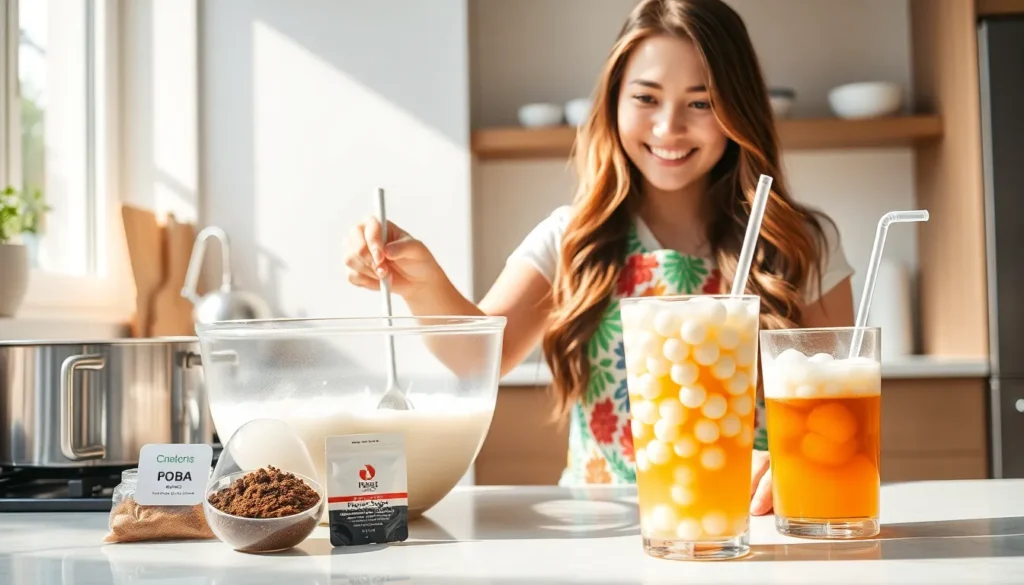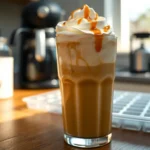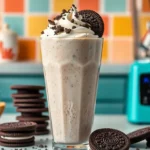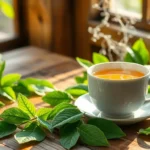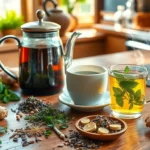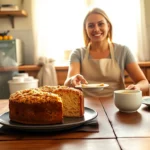We’re about to share the ultimate homemade boba recipe that’ll transform your kitchen into your favorite bubble tea shop. Those perfectly chewy tapioca pearls that make every sip an adventure? You can create them from scratch with just a few simple ingredients and our foolproof technique.
Boba tea originated in Taiwan during the 1980s and has since become a global phenomenon that’s captured hearts worldwide. While store-bought boba often contains preservatives and artificial flavors, making your own ensures you get that authentic texture and natural sweetness that makes each pearl pop in your mouth.
What Makes the Best Boba Recipe
Texture stands as the most critical element in determining a successful boba recipe. We achieve the perfect chewiness through precise tapioca starch ratios and careful cooking techniques that create pearls with the ideal bounce. The pearls should offer gentle resistance when bitten while maintaining a soft interior that never becomes mushy or overly firm.
Temperature control separates exceptional boba from mediocre versions. We maintain consistent heat throughout the cooking process to ensure even gelatinization of the starch molecules. The water temperature must reach a rolling boil before adding the pearls and should remain steady to prevent uneven cooking that results in hard centers or overcooked exteriors.
Timing precision determines the final quality of our homemade boba. We monitor cooking duration carefully because even thirty seconds can transform perfectly chewy pearls into disappointing mush. Fresh tapioca starch produces superior results compared to older products that may have lost moisture content and binding properties.
Sweet balance enhances the overall boba experience without overwhelming the beverage. We incorporate brown sugar or honey during the final cooking stages to create natural sweetness that complements rather than masks the subtle tapioca flavor. The sweetening process also adds an attractive glossy finish that makes the pearls visually appealing.
Size consistency ensures uniform cooking and professional presentation. We roll each pearl to approximately quarter-inch diameter for optimal texture and cooking efficiency. Uniform sizing prevents some pearls from overcooking while others remain undercooked in the same batch.
Fresh preparation maximizes flavor and texture quality. We serve our boba within two hours of cooking to maintain the characteristic chewiness that defines authentic bubble tea. Storage beyond this timeframe leads to texture degradation and loss of the signature bounce that makes boba irresistible.
Essential Equipment and Tools
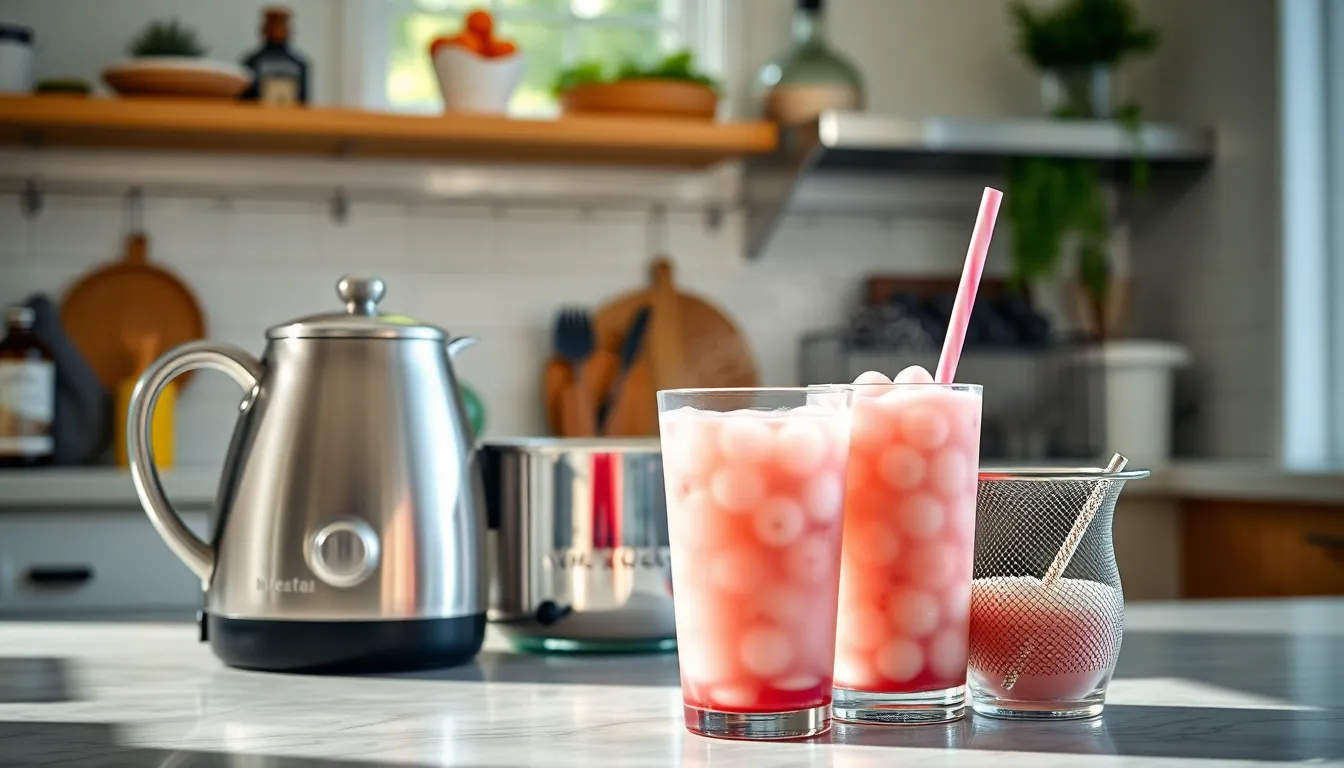
Creating authentic boba tea at home requires exact equipment to achieve the perfect texture and flavor we’re aiming for. We’ve identified the essential tools that will help you master this beloved Taiwanese beverage.
Tea Kettle serves as our foundation for brewing the perfect base. Strong tea requires proper temperature control, and a quality kettle ensures we achieve the ideal brewing conditions for our double-strength tea.
Tea Strainer or Infuser becomes crucial when working with loose-leaf varieties. We recommend using a fine-mesh strainer to prevent any tea particles from affecting the smooth texture of our finished drink.
Large Pot handles the most critical step in boba preparation. Cooking tapioca pearls requires ample space for proper circulation during the 15-25 minute boiling process. We need a pot that can accommodate 3 cups of water plus the expanding pearls.
Colander or Strainer ensures proper drainage after cooking our tapioca pearls. Quick drainage prevents overcooking and helps maintain that signature chewy texture we’re seeking.
Boba Straw completes the authentic experience. These wide-diameter straws are specifically designed to accommodate the tapioca pearls, making each sip a perfect combination of tea and chewy pearls.
| Equipment | Primary Function | Size Requirement |
|---|---|---|
| Tea Kettle | Brewing double-strength tea | 2+ cup capacity |
| Large Pot | Boiling tapioca pearls | 4+ cup capacity |
| Strainer | Draining cooked pearls | Fine mesh |
| Boba Straw | Serving finished drink | Wide diameter |
Additional tools like measuring cups and spoons will help us achieve consistent results with our simple syrup preparation. Having these items ready before we begin ensures smooth execution of each step in our boba-making process.
Ingredients
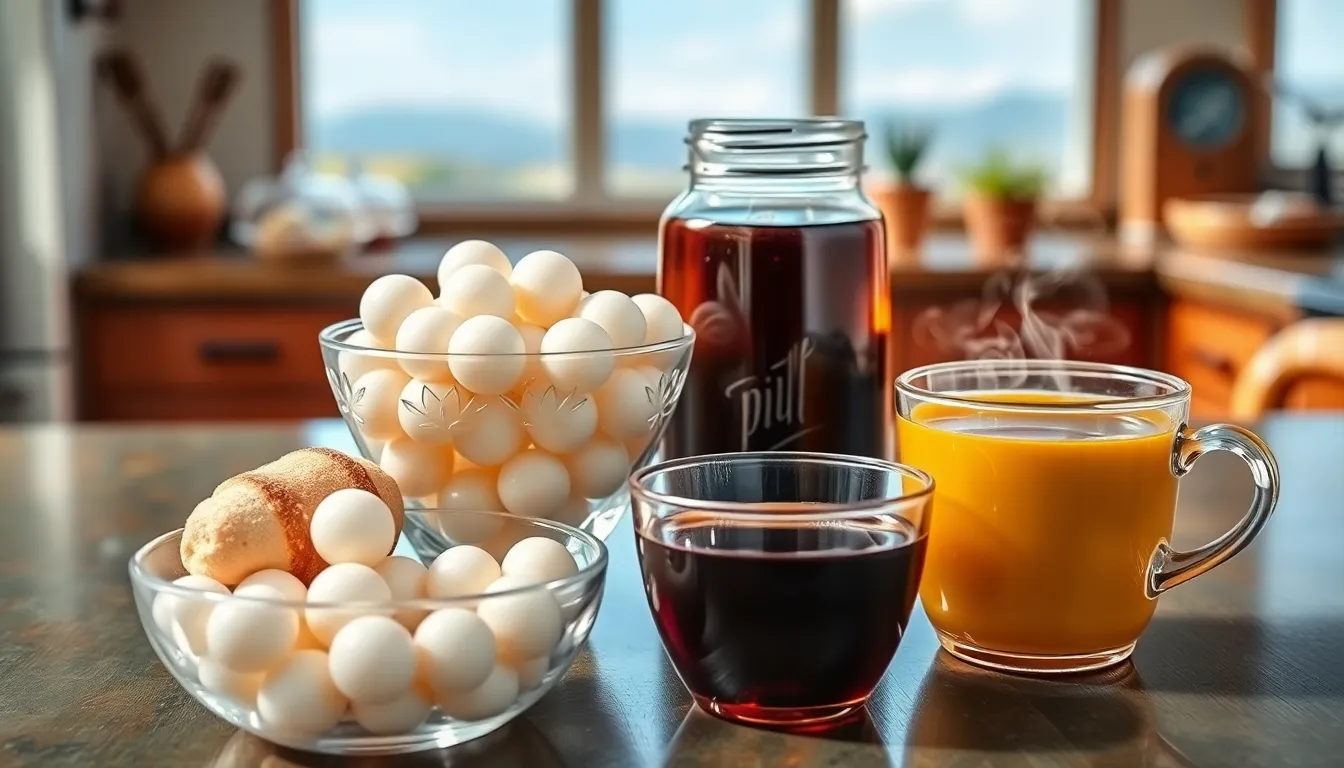
We’ve carefully selected each ingredient to ensure our homemade boba achieves the perfect balance of chewy texture and authentic flavor. Our ingredient list focuses on quality components that create the signature elements of exceptional bubble tea.
For the Tapioca Pearls
- 1/4 to 3/4 cup instant or quick-cooking tapioca pearls (boba) per serving
- Water for boiling (enough to fully submerge pearls)
For the Brown Sugar Syrup
- 1/4 cup brown sugar
- 2 tablespoons hot water (add more for desired consistency)
- Small saucepan (optional for gentle heating to ensure complete sugar dissolution)
For the Milk Tea Base
- 1-2 black tea bags or 2 tablespoons loose-leaf black tea per 1-2 cups hot water
- 1/4-1 cup milk (whole dairy or plant-based varieties work equally well)
- Ice cubes (optional for cold preparation)
- Additional hot water for steeping tea (1-2 cups depending on serving size)
Instructions
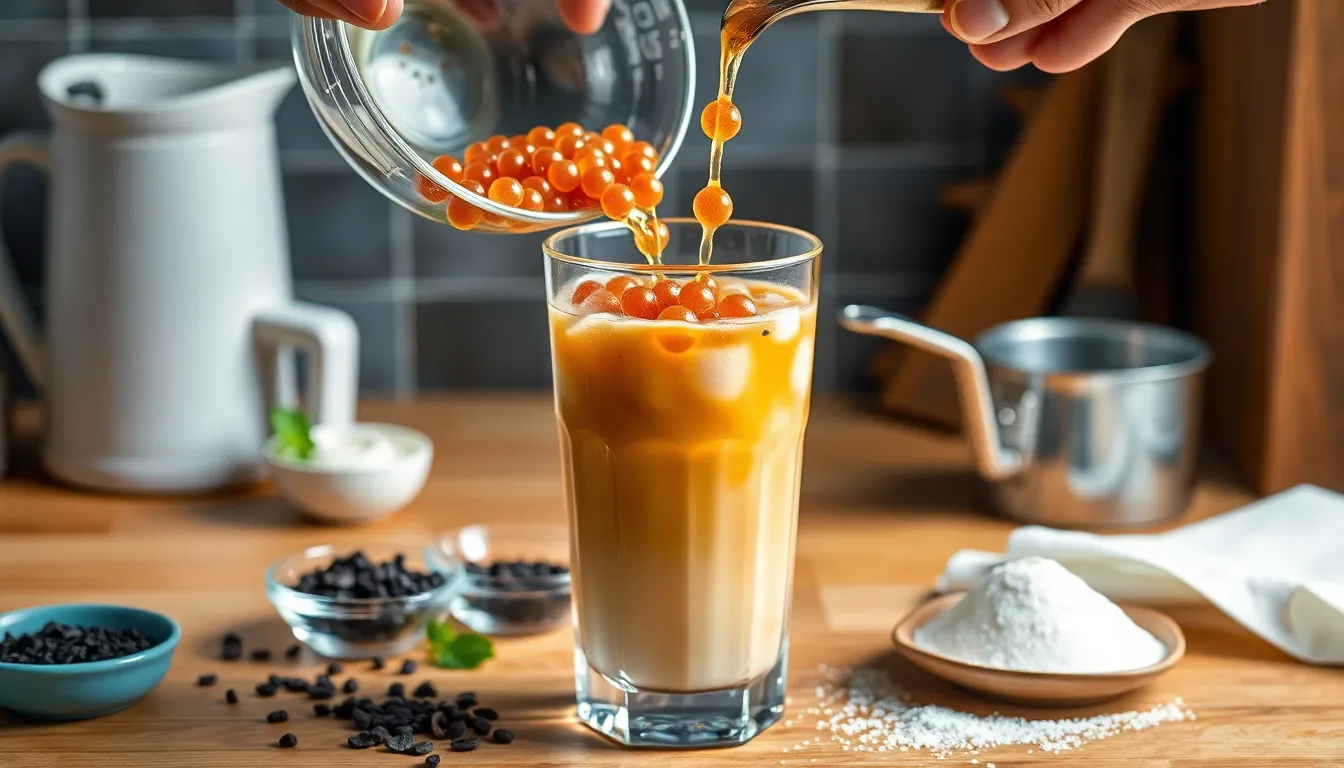
Now we’ll walk through each step to create authentic boba tea from scratch. Follow these detailed instructions to achieve the perfect chewy texture and rich flavors that make homemade boba irresistible.
Making Homemade Tapioca Pearls
We start by preparing the tapioca dough that forms the foundation of our boba pearls. Heat 1/4 cup water and 2 tablespoons sugar in a pot over medium heat until the sugar dissolves completely and the water reaches near boiling point. Remove the pot from heat immediately to prevent overheating.
Stir in 1 tablespoon of tapioca starch while the mixture is still hot until it forms a smooth paste with no lumps visible. Return the pot to low heat and continue stirring until the mixture thickens into a paste consistency. Remove from heat once again and quickly mix in the remaining tapioca starch while the mixture remains warm.
The dough will form a sticky consistency that requires immediate handling. Dust your work surface generously with tapioca starch and knead the warm dough until it becomes smooth and pliable. Add more starch as needed to prevent excessive sticking.
Divide the dough in half and keep one portion covered to prevent drying. Roll the working portion into thin rods approximately 1/4 inch in diameter. Cut these rods into small pieces and roll each piece between your palms to create tiny balls. Size consistency matters significantly since the pearls will expand during cooking.
Dust the shaped pearls thoroughly with tapioca starch to prevent them from sticking together. Store any unused dry pearls in an airtight container if not cooking immediately.
Preparing the Brown Sugar Syrup
We create the signature brown sugar syrup that gives boba its distinctive sweetness and color. Combine equal parts brown sugar and water in a small saucepan over medium heat. Stir continuously until the brown sugar dissolves completely into the water.
Allow the mixture to simmer gently until it thickens slightly and develops a rich syrup consistency. The syrup should coat the back of a spoon when ready. Remove from heat and set aside for coating the cooked tapioca pearls later.
Cooking the Tapioca Pearls
Boil a large pot of water using at least 4 cups of water per cup of tapioca pearls to ensure proper cooking space. Add the shaped tapioca pearls carefully to the boiling water and stir gently until they float to the surface.
Reduce heat to maintain a steady simmer and cook the pearls for 20 to 30 minutes while stirring occasionally to prevent sticking. The pearls will gradually become translucent and develop their characteristic chewy texture.
Cover the pot after cooking and let the pearls sit for an additional 15 to 20 minutes to complete the cooking process. Drain the pearls through a fine mesh strainer and rinse with cold water to stop the cooking and remove excess starch.
Transfer the cooked pearls immediately to the prepared brown sugar syrup and let them soak for 10 to 15 minutes. This step infuses the pearls with sweetness and creates the signature brown sugar coating.
Brewing the Perfect Tea Base
We brew a strong tea base that can stand up to the milk and maintain its flavor profile. Use approximately double the usual amount of tea leaves or tea bags to create a concentrated brew. Steep 2 tablespoons of loose leaf black tea or 2 tea bags in 1 to 2 cups of hot water for 5 to 7 minutes.
Strain the tea leaves or remove the tea bags and allow the brewed tea to cool to room temperature. Refrigerate the tea base if preparing in advance or if you prefer a completely cold drink.
Assembling Your Boba Drink
Place a generous spoonful of the brown sugar coated tapioca pearls into the bottom of a tall glass. Pour the cooled tea base over the pearls while leaving room for milk and ice.
Add 1/4 to 1 cup of your preferred milk depending on desired creaminess. Dairy milk creates a traditional flavor while plant based alternatives offer unique taste profiles. Add ice cubes to fill the glass and chill the drink thoroughly.
Stir the drink gently with a wide boba straw to distribute the flavors evenly. Serve immediately while the tapioca pearls maintain their optimal chewy texture and the drink stays properly chilled.
Directions for Different Boba Variations
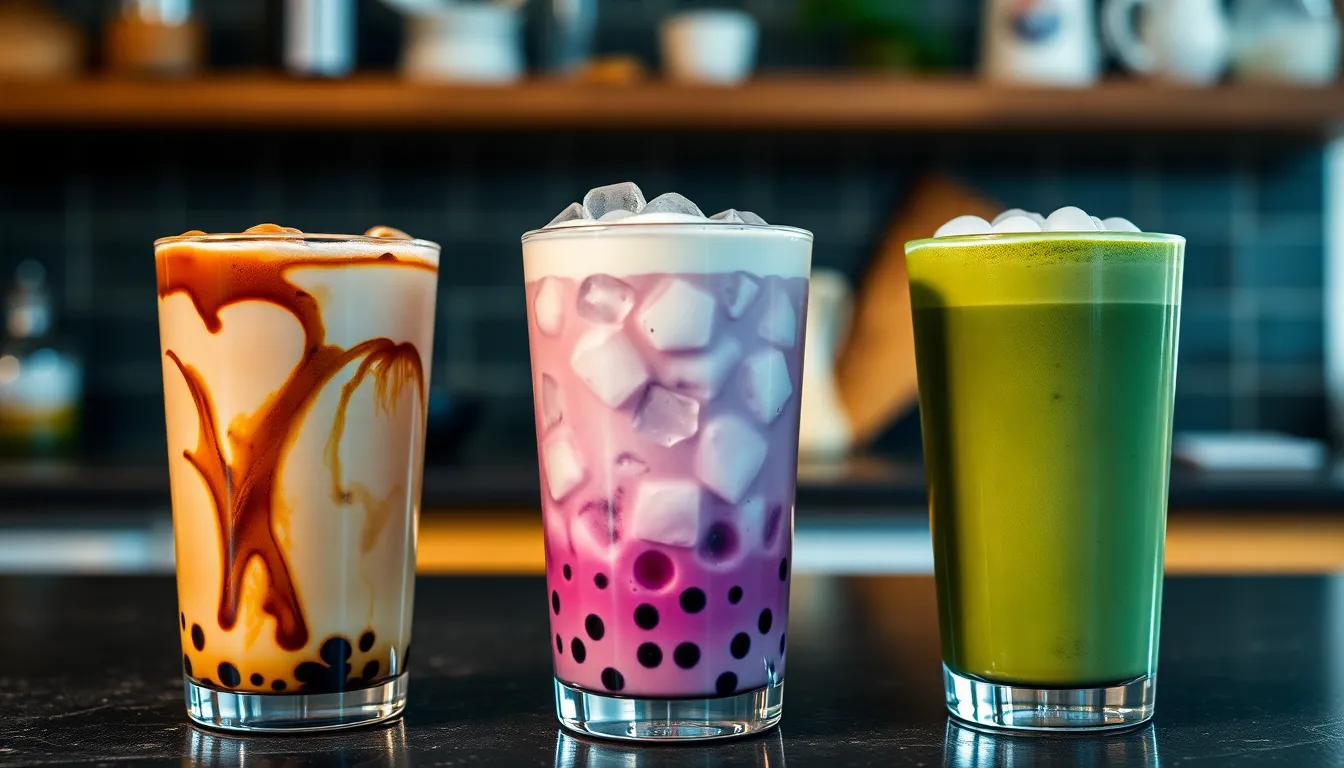
Each boba variation offers its own unique flavor profile and preparation method. We’ll guide you through three popular varieties that showcase different taste experiences and techniques.
Classic Brown Sugar Milk Tea
We start by preparing the signature brown sugar syrup that gives this drink its distinctive caramelized flavor. Heat 2 cups of brown sugar with equal parts water in a medium saucepan over medium heat until it reaches a rolling boil. Stir continuously to prevent burning and create a smooth syrup consistency.
Next, we cook the tapioca pearls in a large pot of boiling water for 15-20 minutes until they achieve the perfect chewy texture. Drain the pearls immediately and transfer them to the prepared brown sugar syrup while still hot. Allow the pearls to soak for at least 10 minutes to absorb the rich caramelized flavors.
For the milk tea base, we brew 2 tablespoons of loose black tea leaves in 6 cups of hot water for 5 minutes to create a strong foundation. Add 3 tablespoons of light brown sugar to the tea while it’s still warm and stir until completely dissolved. Allow the tea to cool to room temperature before refrigerating.
We assemble the drink by first coating the inside of our serving glass with brown sugar syrup using a spoon. Add the soaked tapioca pearls to the bottom of the glass followed by ice cubes. Pour the chilled milk tea over the ice and finish with your choice of milk for a creamy finish.
Taro Boba Tea
We begin this purple-hued variation by creating the taro base using either taro syrup or taro powder. Mix 3-4 tablespoons of taro powder with 1/4 cup of hot water to form a smooth paste without any lumps. Gradually add 1 cup of cold milk while whisking continuously to achieve a uniform purple color and creamy consistency.
Cook the tapioca pearls following the same method as the brown sugar variation. Boil them for 15-20 minutes in plenty of water then drain thoroughly. Since taro boba doesn’t traditionally use brown sugar syrup, we soak the cooked pearls in simple syrup made from equal parts sugar and water.
We enhance the taro flavor by blending the taro milk mixture with ice cubes in a blender for 30 seconds. This creates a frothy texture that complements the earthy and slightly sweet taro taste. Taste and adjust sweetness by adding more taro powder or sugar as needed.
Assembly involves placing the syrup-soaked pearls at the bottom of our serving glass. Add fresh ice cubes and pour the blended taro mixture slowly to create beautiful color layers. Serve immediately with a wide boba straw for the best experience.
Matcha Boba Latte
We prepare the matcha base by whisking 2 teaspoons of high-quality matcha powder with 2 tablespoons of hot water at 175°F to avoid bitter flavors. Use a bamboo whisk or small regular whisk to create a smooth paste without any powder clumps. The water temperature is crucial for preserving the delicate matcha flavor.
Cook the tapioca pearls using our standard boiling method for 15-20 minutes until they reach the desired chewiness. Drain and rinse with cold water to stop the cooking process. We soak these pearls in a light simple syrup that won’t overpower the subtle matcha taste.
For the latte component, we gradually mix the matcha paste with 1 cup of cold milk, stirring constantly to maintain smoothness. Add 1-2 tablespoons of honey or sugar to balance the natural bitterness of matcha. The sweetness level should complement rather than mask the distinctive green tea flavor.
We create this elegant drink by placing the soaked pearls in our serving glass and adding ice cubes. Pour the matcha latte mixture slowly over the ice to preserve the beautiful green color. Give it a gentle stir before serving to distribute the matcha evenly throughout the drink.
Storage and Make-Ahead Tips
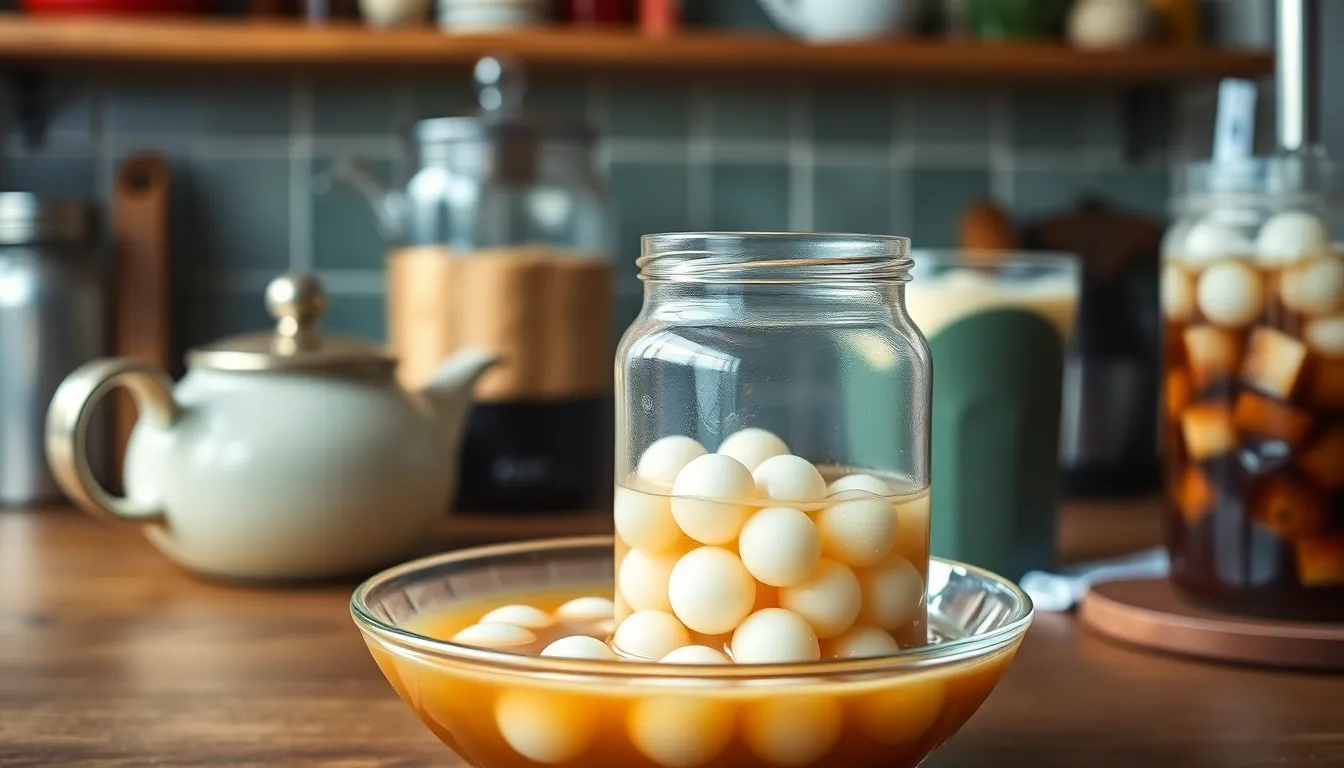
Proper storage techniques ensure our homemade boba maintains its signature chewy texture and vibrant flavor. Smart preparation strategies allow us to enjoy fresh bubble tea whenever cravings strike.
Storing Cooked Tapioca Pearls
We recommend consuming tapioca pearls immediately after cooking for optimal texture and chewiness. Fresh pearls stored in brown sugar syrup at room temperature remain enjoyable for several hours without compromising their bounce.
Refrigeration causes tapioca pearls to lose their characteristic chewiness and become hard. We avoid storing cooked pearls in cold environments for extended periods since the texture deteriorates rapidly under these conditions.
Room temperature storage in syrup works best for short-term preservation. The brown sugar syrup acts as both a flavor enhancer and texture protector during this limited storage window.
Preparing Components in Advance
We can brew black tea ahead of time and refrigerate it to speed up the chilling process when assembling our boba drinks. This preparation method saves valuable time during the final assembly stage.
Brown sugar syrup preparation works well as an advance step since it remains stable at room temperature. We keep this sweet component ready for immediate use when cooking fresh tapioca pearls.
Tapioca pearls require cooking just before serving to maintain their ideal texture and chewiness. Short-term storage in syrup immediately after cooking provides the best compromise between convenience and quality for our homemade boba experience.
We achieve optimal results by combining advance preparation of stable components with fresh cooking of time-sensitive elements like tapioca pearls.
Pro Tips for Perfect Boba Every Time
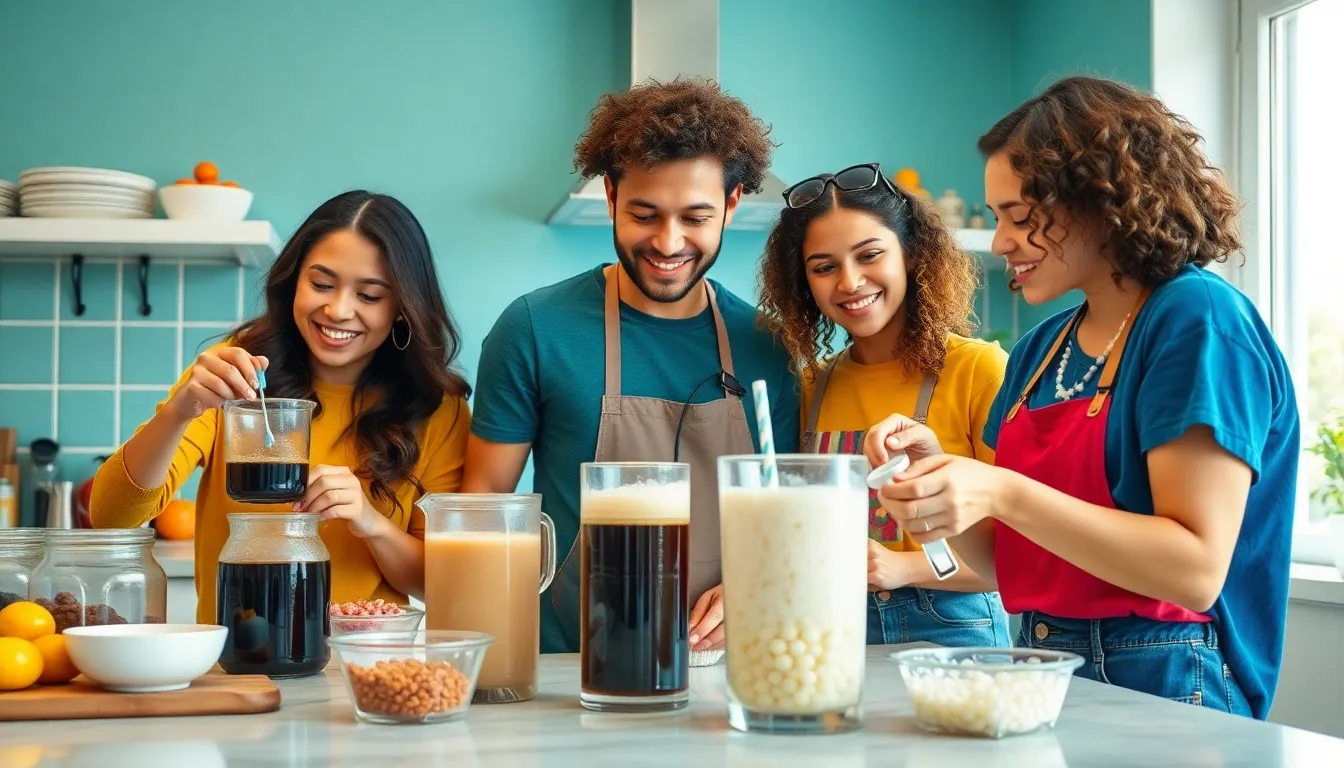
Use High-Quality Tea forms the foundation of exceptional boba tea. We recommend brewing your tea extra strong since the milk and ice will dilute the flavor. Steep black tea bags for 15-25 minutes rather than the standard 3-5 minutes to create a robust base that won’t get lost among the other ingredients.
Adjust Sweetness according to your personal preference by tasting as you go. Simple syrup dissolves more easily than granulated sugar and provides consistent sweetness throughout the drink. We suggest starting with less sweetener than you think you need since you can always add more but cannot remove excess sugar.
Customize with Milk to suit dietary preferences and flavor profiles. Plant-based alternatives like oat milk or almond milk work beautifully for vegan options and add their own subtle flavors. Whole milk creates the creamiest texture while half-and-half provides extra richness for an indulgent treat.
Store Tapioca Pearls Properly to maintain that signature chewy bounce. After cooking we recommend keeping the pearls in syrup at room temperature rather than refrigerating them. Cold temperatures cause tapioca pearls to harden and lose their pleasant texture within hours.
Cook Pearls in Small Batches ensures even cooking and prevents overcrowding in the pot. Large batches often result in uneven textures with some pearls remaining hard while others become mushy. We find that cooking 1/2 cup of dry pearls at a time produces the most consistent results.
Test Doneness Frequently by removing a pearl and biting into it during the cooking process. Properly cooked tapioca pearls should have no hard center and maintain a chewy exterior. The cooking time can vary between brands so rely on texture rather than timer alone.
Serve Immediately for the best possible experience. Tapioca pearls begin losing their ideal texture within 2-4 hours of cooking even when stored properly. We always prepare fresh pearls just before assembling drinks to ensure our guests enjoy that perfect chewy consistency.
Use Wide Straws specifically designed for boba tea to allow the pearls to flow freely. Regular straws create frustration and prevent proper enjoyment of the textural contrast that makes boba tea special. These specialized straws enhance the entire drinking experience.
Troubleshooting Common Boba Problems
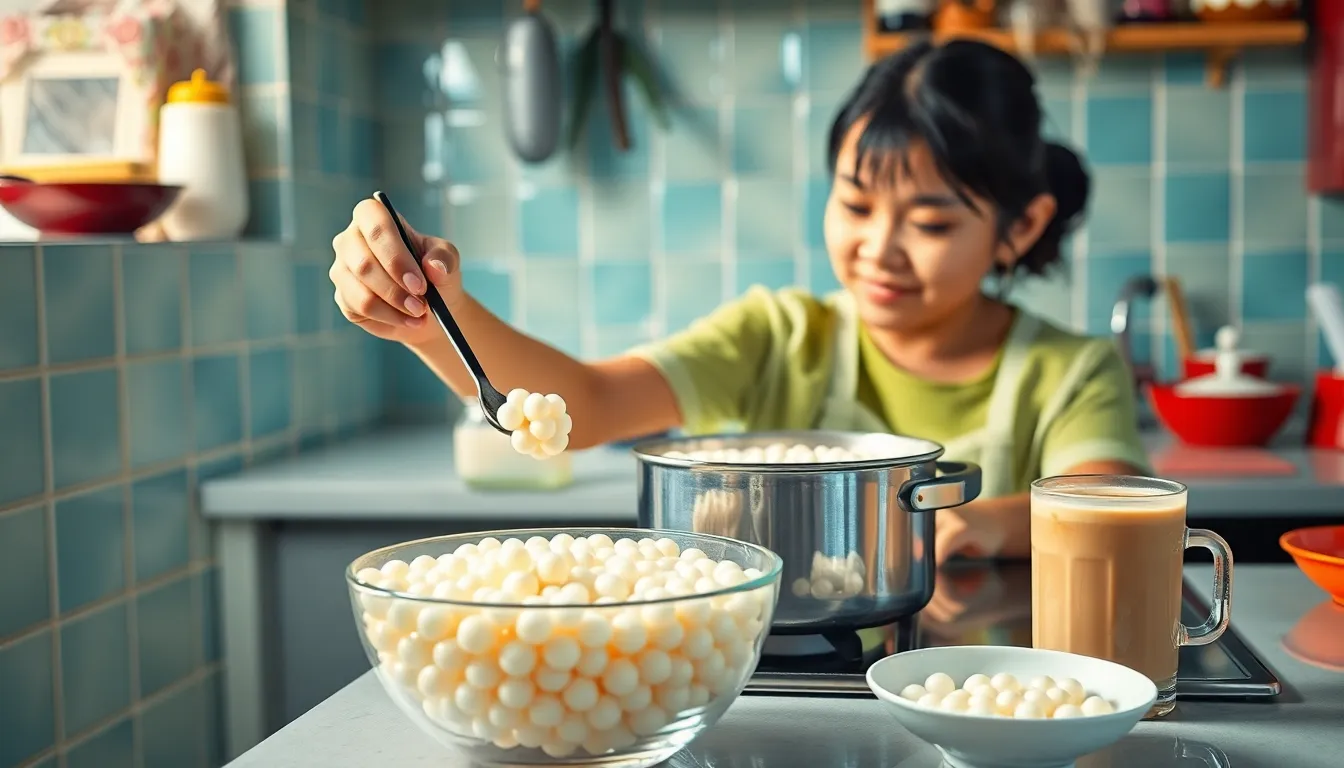
Even experienced home boba makers encounter challenges when perfecting their technique. We’ve compiled the most common issues that arise during boba preparation along with proven answers to help you achieve consistent results every time.
Hard or Overly Chewy Tapioca Pearls
Texture problems often stem from incorrect cooking times or temperatures. When your boba pearls turn out hard or uncomfortably chewy we recommend following the precise 20-minute simmering time followed by a 25-minute covered resting period. Under-cooking results in hard centers while over-cooking creates mushy exteriors with tough cores. The resting phase allows the pearls to finish cooking through residual heat ensuring even texture throughout.
Pearls Sticking to the Pot Bottom
Insufficient stirring during the cooking process causes tapioca pearls to clump together and stick to your pot’s surface. We advise stirring frequently throughout the entire simmering period to prevent this issue. Use a wooden spoon to gently move the pearls around ensuring they cook evenly and maintain their individual shape.
Boba Hardening After Storage
Moisture loss causes cooked tapioca pearls to lose their signature bounce and become hard. We recommend storing any leftover pearls in a small amount of simple syrup or clean water to maintain their soft texture. This method prevents dehydration while preserving the characteristic chewiness that makes boba so appealing.
Weak Tea Flavor in Final Drink
Inadequate steeping time produces weak tea that gets further diluted by milk and ice. We suggest steeping your black tea for the full recommended 3 to 5 minutes to create a strong base that maintains its flavor profile in the finished drink. Remove tea bags promptly after steeping to avoid bitter overtones.
Pearls Clumping Together During Cooking
Using insufficient water or failing to stir during the cooking process causes individual pearls to stick together in unappetizing clumps. We recommend using ample water (at least 6 cups per 1/2 cup of dry pearls) and maintaining consistent stirring throughout the cooking process to keep pearls separated.
Milk Tea Separation
Poor mixing techniques cause the milk and tea components to separate creating an unappealing layered appearance. We emphasize thorough stirring before serving to ensure all ingredients blend seamlessly. Add milk gradually while stirring continuously for the smoothest integration.
| Problem | Cause | Solution |
|---|---|---|
| Boba is hard or too chewy | Under/overcooking not enough time | Follow recommended cooking times (20 min simmer + 25 min rest) |
| Boba sticks to the bottom | Insufficient stirring | Stir frequently while simmering |
| Boba becomes hard after a while | Loses moisture/dries out | Store in a little syrup or water |
| Tea flavor is weak | Steeping time too short | Steep tea for recommended time (3–5 min) |
| Boba pearls are stuck together | Not enough water not stirred | Use ample water and stir during cooking |
| Milk tea separates | Not mixed well | Stir thoroughly before serving |
These troubleshooting techniques will help you overcome the most common obstacles in boba preparation. Remember that practice makes perfect and each batch teaches you more about achieving the ideal texture and flavor balance your family craves.
Conclusion
Making perfect boba at home isn’t just about following a recipe—it’s about understanding the techniques that create those satisfying chewy pearls we all crave. With the right ingredients quality control and proper timing you’ll master this beloved bubble tea staple.
We’ve covered everything from essential equipment to troubleshooting common issues so you’re fully equipped for success. Remember that fresh tapioca pearls make all the difference so cook them just before serving for optimal texture.
Now it’s time to put these techniques into practice. Start with our classic brown sugar milk tea recipe then experiment with different flavors to discover your personal favorites. Your homemade boba journey begins today!
Frequently Asked Questions
What is boba and where did it originate?
Boba, also known as bubble tea, consists of chewy tapioca pearls served in sweetened tea with milk. It originated in Taiwan during the 1980s and has since become a popular beverage worldwide. The tapioca pearls are made from cassava starch and provide the signature chewy texture that makes boba tea unique.
How long do homemade tapioca pearls stay fresh?
Homemade tapioca pearls should be consumed within 2 hours of cooking for optimal texture and chewiness. They can be stored at room temperature in brown sugar syrup for a few hours, but avoid refrigeration as it causes the pearls to harden and lose their signature bounce.
What equipment do I need to make boba at home?
Essential equipment includes a tea kettle for brewing, fine-mesh strainer, large pot for boiling pearls, colander for drainage, measuring cups and spoons, and wide-diameter boba straws for serving. Having all tools ready before starting ensures a smooth boba-making process and consistent results.
Can I make boba tea components ahead of time?
Yes, you can brew black tea and prepare brown sugar syrup in advance to streamline assembly. However, tapioca pearls must be cooked fresh just before serving to maintain their chewy texture. This combination of advance prep and fresh cooking allows you to enjoy homemade boba efficiently.
Why are my tapioca pearls hard or too chewy?
Hard or overly chewy pearls typically result from incorrect cooking times or ratios. Follow recommended cooking times precisely, stir frequently to prevent sticking, and ensure proper water-to-pearl ratios. Test doneness regularly during cooking, as even slight timing variations can significantly affect the final texture.
What type of tea works best for boba?
Black tea is the traditional choice for boba, but you can use various teas like green tea, oolong, or flavored varieties. Brew the tea extra strong (double strength) to prevent dilution from milk and ice. Use 1-2 tea bags or 2 tablespoons of loose-leaf tea per 1-2 cups of water.
Can I customize the sweetness and milk in my boba?
Absolutely! Adjust sweetness using brown sugar syrup, simple syrup, or honey to taste. You can use any milk type including dairy, almond, oat, or coconut milk based on dietary preferences. Start with less sweetener and gradually add more until you achieve your desired flavor balance.

